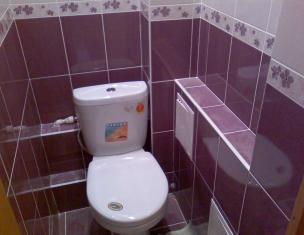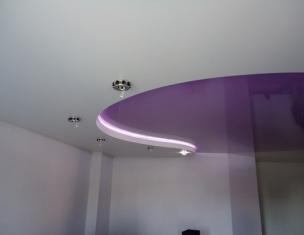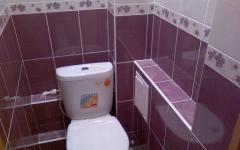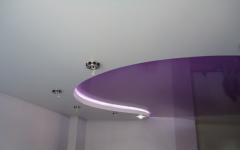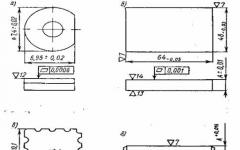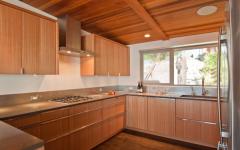Today we will talk about how you can cope on your own and save a little, or rather, how you can make a kitchen hood with your own hands.
A range hood is a very important kitchen appliance, not because it draws out odors, but because it keeps you and your family healthy. Therefore, when choosing a hood, you want both quality and affordable cost. And the modern market shows that repair is not such an affordable pleasure. Prices for new hoods with a full range of functions are about 6-8 thousand rubles
The hood is one of the main elements of your kitchen.
Unfortunately, not every family can afford such a pleasure, but the hood is still needed. We offer you an alternative option - to make a hood for the kitchen with your own hands.
What you need to know about hoods?
If you decide to make a kitchen hood yourself, we congratulate you, because soon you will become the owner of a personalized hood, a design that you yourself invent.
So, before proceeding with the purchase of materials and direct work, you must understand the principle of operation of such a device as a hood.

Hoods come in different types
As we understand from the name itself, the function of the hood is to pump out polluted and hot air, process or change it and return fresh and purified air to the kitchen using filters.
Where does the smoky air go? Each building has a ventilation shaft in its construction, where the air is removed.
Ventilation ducts need careful care and attention, they need to be cleaned periodically. Otherwise, the work of any hood will lose its meaning.
Or the air is simply recycled and returned back. For this, modern hoods are equipped with a grease filter and a carbon filter. Such a system is very simple, because the filters do not need a ventilation shaft.

Stylish kitchen hood design
Today, the modern hood manufacturing industry offers a lot of options that are different in price, shape, performance, texture, design, etc. But in general, all hoods are conventionally divided into two groups:
- passive;
- active.
Passive hoods is a dome-type device that removes hot air only with the help of an upward draft. This type of technology is not crammed with electronics, fans, electric motors and complex mechanisms. This is both a plus and a minus at the same time. Since passive exhaust will only work if the ventilation ducts are clean and the ventilation pipe is in good working order.
Active hoods- This is a more modern version of the hood, since the principle of operation is based on an electric motor. In addition to the electric motor, active hoods boast the presence of fans, grease and carbon filters.
The disadvantage of such hoods is the lack of fresh air. Since the filters process the polluted air and reverse it back to the kitchen. Also, these filters need to be cleaned frequently and changed periodically. Doubtful filter - once a month, high-quality filter - once every three months.
Such a hood is an excellent option for modern kitchen renovation, but more expensive, as it consumes a significant amount of electricity.

The hood should match the style of your kitchen
Making a kitchen hood with your own hands. Method number 1
Stage number 1. First of all, it is necessary to outline a place on the wall for the future hood. You need a lot of space, because you need to place not only the hood, but also the air duct.
The air duct is not very attractive in appearance, so it is most often hidden in a box. The box is made from drywall or the material from which the entire kitchen set was made.
The easiest way will be for the owner, whose air vent is located directly above the stove. If the hole is arranged to the side, you need to pre-mark the position of the duct for the duct.
Please note: if during the repair you are planning a suspended ceiling, then a significant part of the duct can be hidden under the ceiling lining.

The design of the hood greatly affects the interior of the entire kitchen.
To prevent the duct from creating too loud noises, it can be wrapped with batting or any other soundproof material.
Stage number 2. Once you have decided on the location of the duct, you can start making a frame for it.
Frame manufacturing sequence:
- Mark the bottom surface of the duct box on the wall; according to the level of the lower part, attach the starting profile, which is made of galvanized metal, to the wall.
- Next, attach the starting profile to the ceiling. Remember, there is your markup on the ceiling.
If you do not plan a duct box for an even, but a curved line, the duct must be cut and bent before fastening.
- From the initial profile, lower down a few vertical elements of the main profile. At the same time, attach them to the initial profile using self-tapping screws.
- Install another initial profile panel on your new gimbals.
At the end of this stage, equip the lower part of the profile with transverse strips, then sheathe them with drywall.
Your box is ready, you can proceed directly to the hood itself.

This type of hood is suitable for those kitchens where heavy cooking is rare.
Stage number 3. At this stage, proceed to the manufacture of the hood body.
The sequence of manufacturing the hood body:
- Take the starting profile and make the bottom frame of your future hood out of it. Then mount it on the kitchen wall.
The frame is very easy to attach if you install the hood in a niche. If not, attach the side elements of the frame to the box.
- From the main profile, cut out the frame parts of the future hood and connect them to the bottom frame.
- To make the design more reliable and rigid, you can secure it a little: reinforce the side parts of the hood with transverse strips from the profile.
Now your frame is ready.
Connect the air duct to the vent. But before that, be sure to check the presence of traction in the system.
Then proceed to finish the dome with drywall.
Stage number 4. Extraction trim.
The sequence of finishing the hood:
- Sheathe the hood body and the air duct box with drywall.
- Be sure to protect the corners with a metal perforated corner.
- Finish the entire structure with putty. Mask all drywall joints and fastener locations.
- Now you can paint the hood in any color you want or finish it in any other way.
Your extract is ready.




